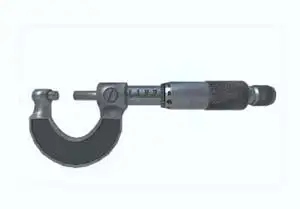Instrumentation
Instrumentation or the methods of data collection:
- Do not purposely start a new page for this section. Type the words ‘Instrument and Data Collection Procedure’ flush with the left margin and italicize them.
- For a qualitative study to be successful and effective, it should achieve the following three elements: (1) internal validity or credibility, (2) external validity or transferability, and (3) dependability (McKay, 2006).
- In this part of research, we discuss three factors that may affect internal validity: equivalence between pre- and post-tests, giving the goal of the study away, and test instructions and questions.
- As you review each type of instrumentation, consider if you would use it to collect data for your own investigation, and whether you would use it to collect qualitative data or quantitative data. You might get concerned about the methodologies used for your research. You should, however, just think of the question or hypothesis; that itself stipulates a kind of methodology to be used. So if you have a question that is about, trying to find out people’s opinions – trying to engage with the subtle manners of their everyday life – you may want to go down a qualitative path. However, if you want to measure something, do direct comparisons. You are more likely to want to go down a quantitative path. As such there is often a marked divide in students’ minds between qualitative and quantitative approaches.
- Instrument is the generic term that researchers use for a measurement device (survey, test, questionnaire, etc.). To help distinguish between instrument and instrumentation, consider that the instrument is the device and instrumentation is the course of action (the process of developing, testing, and using the device).
- Carefully summarize each step in the execution of the study. Indicate what a typical test, trial, or session involved.
- Describe any phases that the study had or any instructions that the subject received.
- This is a description of how your research was carried out.
- The length of this section depends on how complex the procedure was.
- It may be advantageous to add subheadings within this section.
- Normally the procedure is given in the correct time-sequence as experienced by the participants.
- Specify groups, e.g., the control group or the treatment group.
- The instrumentation plan is composed of a number of decisions that need to be made before beginning the study. These decisions are made to determine:
- Whether qualitative or quantitative data are required,
- what data are needed to answer the research questions,
- how to gather the data,
- when to gather the data,
- where to gather the data, and
- how to analyze the data.
- These decisions must be made as part of the instrumentation plan for the study. They help guide the progress of the study to the ultimate goal of gathering data and formulating conclusions to answer the research question.



